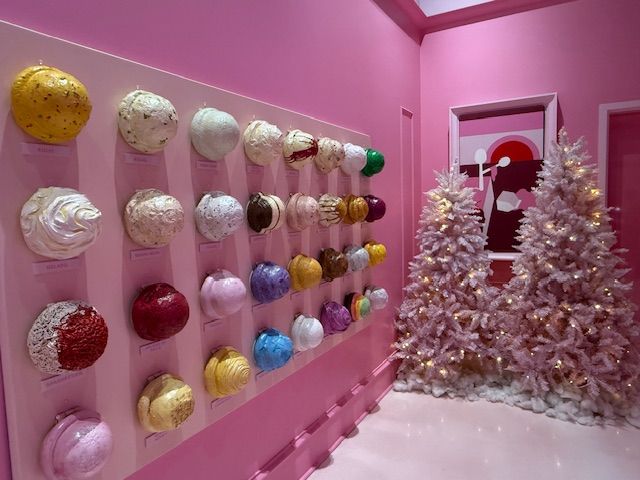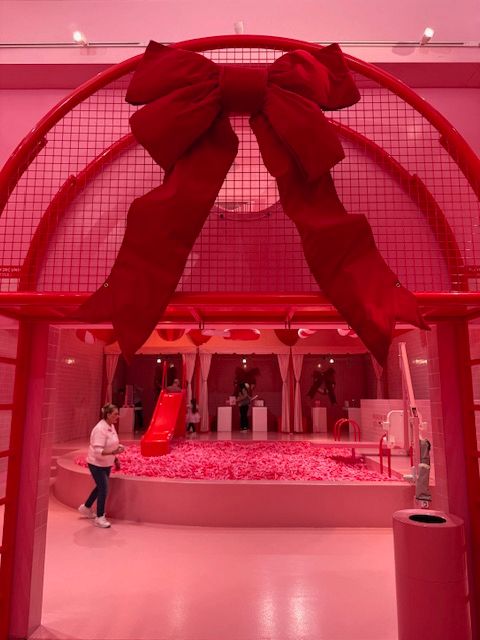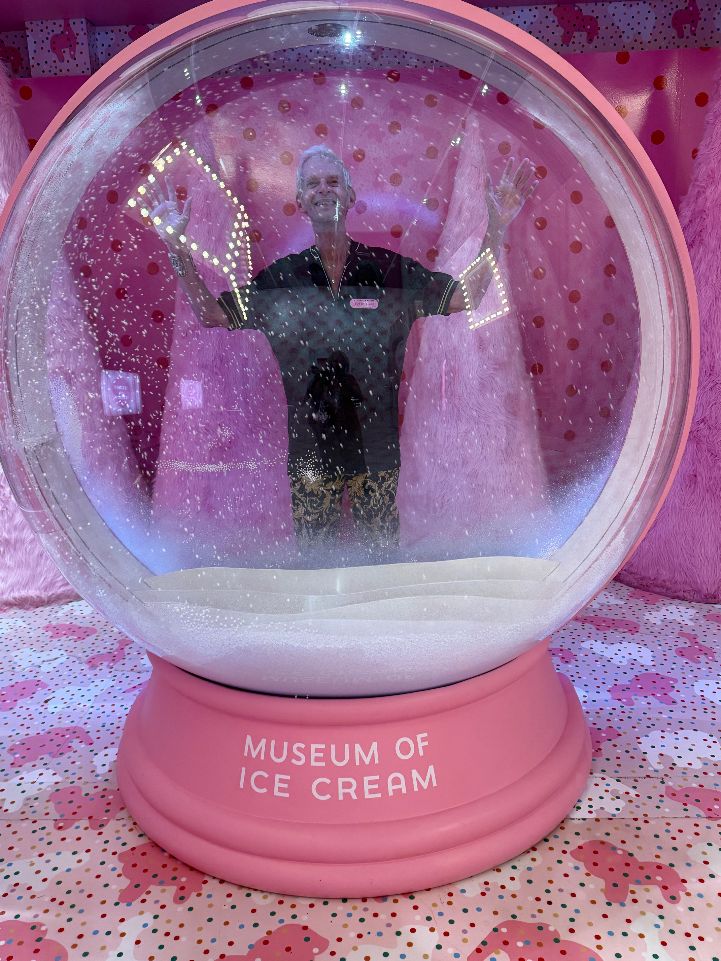A recent visit to the Museum of Ice Cream, located at the Domain in Austin, was a hoot. And now that it is decorated for Christmas, this is the ideal time to enjoy it.
The staff was awesome! They were having fun which made the experience contagious to young & old alike. The only thing missing was Willie Wonka himself!
While my group was thankfully kids-free, it was nice to view young parents with their kids enjoying the large ice cream ‘swimming pool.’ You can slide down into it, but don’t think getting out is easy! It is pictured below with the big red bow at the entryway. The other play stations for kids were also excellent.
I was hoping to learn more about the history of ice cream. One information plaque devotes one of its three paragraphs to the origin of animal crackers; I did not get the relevance of that. But we also learn about how the ice cream cone originated. Apparently, it happened at the 1904 World’s Fair in St. Louis: when an ice cream vendor ran out of cups, he teamed up with a vendor nearby who sold rolled waffles. Voila! The cream cone was born.
The world-wide variety of cool and frozen concoctions are well explained. A whole wall of bigger-than-life size toppings are quite eye-catching. The name or flavour is printed below each one, but the secret is you have to lift them up to find a full description.

For example, spaghettieis is an ice cream sundae from Germany. It looks like spaghetti, complete with strawberry sauce and grated almonds to take the place of tomato sauce and grated cheese. Nhopi is from Zimbabwe. It is a porridge-based dish that infuses pumpkin, squash and peanut butter. Hailing from western Alaska and northern Canada is Akutuq. It is made by whipping caribou fat together with salmonberries, fish, tundra greens and a dash of seal oil. Finally, I’ll mention Ais Kacang, a shaved ice dessert infusing red beans, sweet syrup and jelly.
One room can only be described as bananas: it is covered with pink and yellow bananas hanging in mid-air. I assume this was a homage to the famed banana split, but the lack of any explanation meant the idea did not quite gel. Pretty wild, nonetheless!
As you walk through the museum, different vendors will offer you cotton candy, soft-serve ice cream (in 2 flavours) and DOTS, which are tiny spheres mixed in with chocolate chips. Very delicious. In the room with the toppings on the wall, you can indulge in about nine flavours of ice cream, including Blue Moon, invented in Michigan. In the final room, one can indulge in a milkshake. This is an extra charge, as samplers are unfortunately not offered. The pink-themes décor of the entire museum is repeated here, in a room that doubles as a giftshop.
Austin is not the only place with an Ice Cream Museum. They have expanded across the world (but none in Europe yet). There was even a pop-up in Shanghai.
Certainly a must-see destination for any visitor to Austin, make sure you take your out-of-town guests (of any age) here for a sweet experience. And don’t forget to get your picture in the giant snow globe!

For more information, visit their website:
www.museumoficecream.com/austin/
